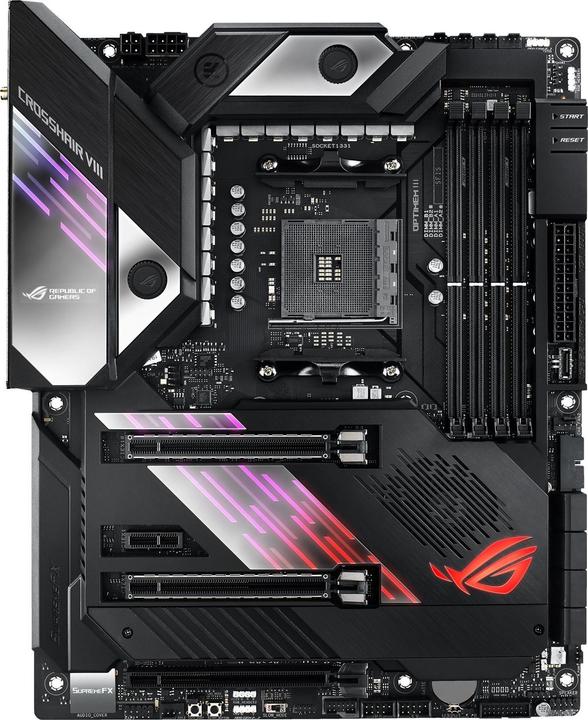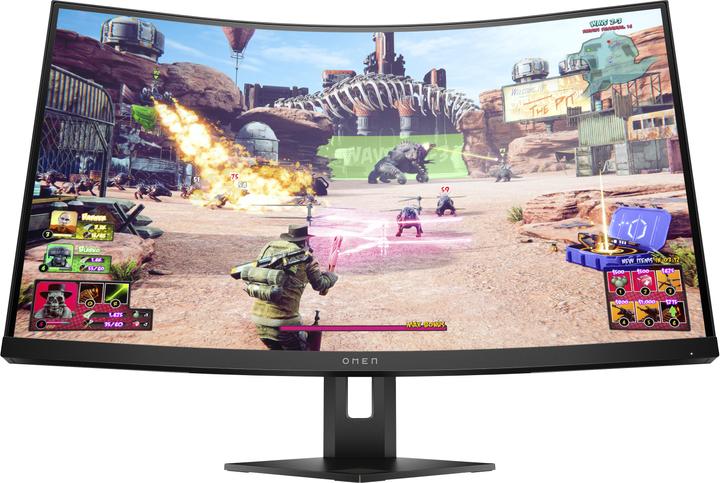

Testing the AMD Ryzen 7 5800X3D: not the best gaming CPU, but a huge step forward
AMD has finally released new processors in April after one and a half years. With the Ryzen 7 5800X3D, the chip developer has layered an additional 64 megabytes of L3 cache onto the CPU, aiming to reclaim the gaming throne from Intel.
The Ryzen 7 5800X3D is a gaming processor through and through. While this first processor with a 3D V-Cache doesn’t recapture the gaming crown from Intel’s Core i9-12900K, it does catch up with it. However, it lags far behind the Intel CPU and even the one-and-a-half year old Ryzen 7 5800X without 3D V-Cache in other applications.
3D V-Cache, or why you’ll only see improvements when gaming
Data flow is crucial when gaming. Fresh assets have to be loaded all the time – textures, animations or sound effects. Instead of always accessing memory for these things, the 5800X3D can retrieve the data from the 3D V-cache. Random data access is much faster as a result. This also entails lower latency and higher FPS when gaming.
With 3D V-Cache, 64 megabytes of L3 cache are placed above the CPU’s computing unit – it supplements the 32 megabytes located there. The Zen 3 unit is thinner than before. Thus, the finished 5800X3D CPU is the same height as a 5800X even with 3D V-cache. 3D cache is connected to the Zen 3 chiplet using Van der Waals forces. Thanks to silicon throughways, signals can be transmitted between layers at 2 terabytes per second.
AMD uses a hybrid approach for its 3D-V cache technology. In addition to the silicon plating, a copper-to-copper connection is also used. According to AMD, this should be up to three times more energy efficient than a pure silicon passage.
Here’s the 5800X3D at a glance, as well as a comparison with the 5800X and 12900K I’m pitting it against in this review. Why the 12900K? AMD wants to reclaim the gaming crown, so the 5800X3D also has to compete with the current king. I’ll only mention the 12900KS in passing as I didn’t test it.
| Processor | Microarchitecture / manufacturing process | Cores / Threads | Base- / Boosted frequency | TDP (Watt) | L3 Cache | PCIe Lanes | Memory Support | Price (as of 14.04.2022) | Price per thread (as of 14.04.2022) |
|---|---|---|---|---|---|---|---|---|---|
| Ryzen 7 5800X3D | Zen 3 / 7 nm | 8 / 16 | 3,4 / 4,5 GHz | 105 Watt | 96 MB | 24 Gen4 | DDR4-3200 | 489 | 30.55 |
| Ryzen 7 5800X | Zen 3 / 7 nm | 8 / 16 | 3,8 / 4,7 GHz | 105 Watt | 32 MB | 24 Gen4 | DDR4-3200 | 369 | 23.05 |
| Core i9-12900K | Alder Lake / Intel 7 | 16 (8 P-Cores and 8 E-Cores) / 24 | P-Cores: 3,2 / 5,2 GHz
E-Cores: 2,4 / 3,9 GHz | 125 / 241 Watt | 30 MB | 16 Gen5
4 Gen4 | DDR5-4800
DDR4-3200 | 599 | 24.95 |
The Ryzen 7 5800X3D cannot be overclocked. Regulations for the volt and clock frequency are deactivated in the BIOS. AMD justifies this with the fact that its stock configuration for the 5800X3D already exhausts frequency and volt performance. The memory, on the other hand, can be overclocked.
It should also be emphasised that the 5800X3D clocks lower than the 5800X. This explains the differences in most of the upcoming benchmarks, chiefly why the 5800X performs better.
Our test setup and methods
I used the following components for this review:
I activated Extreme Memory Profile (XMP) in the BIOS. Otherwise, I left everything at default. I used AMD’s Generic Encapsulated Software Architecture (AGESA), version 1.2.0.6b. Windows 11 ran on version 2H21.
Here’s an overview of the various benchmarks and test games:
- Cinebench R20 and R23
- CPU-Z benchmark
- Blender
- HandBrake
- 7-Zip
- Photoshop
- PCMark 10
- Fire Strike/Fire Strike Ultra
- Time Spy/Time Spy Extreme
- Games: «Assassin’s Creed Odyssey», «Civilization VI: Gathering Storm», «Deus Ex: Mankind Divided», «Far Cry 5», «Gears 5», «Red Dead Redemption 2», «Strange Brigade» and «Shadow of the Tomb Raider»
I ran all benchmarks three times and took the best result in each case.
Cinebench R20 and temperatures
Cinebench R20 tests how a CPU performs when rendering 3D models.
In my benchmark, the 5800X3D is clearly behind the i9-12900K with 28 per cent for a single core. For Multi Core, the figure is just under 80 per cent. Differences compared to the 5800X are also seven and five per cent, respectively. The poorer performance is probably due to the lower clock frequency.

To test heat development, I ran the 10-minute Cinebench R23 benchmark loop. The 5800X3D reached a maximum of 85 degrees Celsius. Its clock frequency was 4.5 GHz on all cores, with a power consumption of 122 watts.
CPU-Z
The CPU-Z benchmark tests the CPU’s speed in both the single and multi cores and uses it to calculate a score.

The results here are similar to Cinebench. However, the difference of 36 per cent compared to the 12900K for a single core is even bigger than before. For Multi Core it’s again around 80 per cent. Compared to the 5800X, the differences are three and two percentage points greater, respectively.
7-Zip
7-Zip’s built-in benchmark tests a system for compressing and decompressing data. From this, it calculates a score in giga instructions per second (GIPS). I chose the default «dictionary size» of 32 megabytes. Since RAM also plays a role in the test, a comparison with the other processors should be taken with a grain of salt: I tested the i9-12900K with DDR5 RAM.

In my test, the 5800X3D almost kept up with the 12900K. Intel only beat AMD by three per cent. Compared to the 5800X, the 5800X3D can celebrate a first success: it achieved five per cent more GIPS.
This performance is probably related to the extended L3 cache. 7-Zip’s benchmark is sensitive to this.
Blender Benchmark
In version 3.0 and above, the Blender benchmark renders three scenes and tallies up three scores from them. I’ve added these up to give final scores for each.

Here, the 5800X3D was almost on par with the 5800X. Compared to the 12900K, the new Ryzen differed by 63 per cent.
Handbrake
For the Handbrake test, I encode the 88-second-long H.264 compressed 4K trailer for «The Dark Knight Rises», choosing the «Fast 1080p30» presets.

The 5800X3D needed 17 seconds more than the 12900K for this task. That’s one second behind the 5800X.
Photoshop
Using the Photoshop benchmark from Puget Systems, I ran different workloads. You can find more detailed information on that here. At the end, the benchmark calculates a score based on the reference workstation. Here I must note that Photoshop is one of the few applications that benefits from faster RAM. So whether the 12900K would actually be that much faster with slower DDR4 RAM is questionable. Likewise, Photoshop responds to high clock frequencies. Therefore, the 5800X3D also scored the worst.

The 5800X3D also has to admit defeat to the 12900K and the 5800X here. My 12900K beat the 5800X3D by almost 50 per cent. Compared to the 5800X, it was «only» 11 per cent.
PCMark 10
The PCMark 10 benchmark tests diverse scenarios such as app loading times, the efficiency of spreadsheet calculations, web browsing and photo and video editing. In other words, it demonstrates how suited a processor is to office work. From that, it calculates a score.

My 5800X3D scored just under 1000 points less than the 12900K. The difference to the 5800X is much smaller, but still amounts to over 4 per cent.
Fire Strike, Fire Strike Ultra, Time Spy and Time Spy Ultra
3DMark’s synthetic gaming benchmarks provided a first glimpse of in-game performance. I haven’t provided the overall score calculated from the results of the graphics card and CPU. This is because the GPU score is inconsistent.




If I actually take the results of the 3DMark benchmarks as an indicator for gaming performance, they don’t look promising: the 5800X3D is 46 per cent behind the 12900K and four per cent behind the 5800X.
Synthetic benchmarks usually don’t speak the whole truth. Will this still carry over to the gaming benchmarks?
The games
For the games, I’ve also provided frame time in percentiles, namely 99 and 99.9, alongside the average frames per second (FPS). The percentile values are usually frametimes measured in milliseconds. These are the time intervals from image to image, or frame to frame. The percentile values ignore statistical outliers. 99th percentile means that 99% of all data is faster than the value provided. If a value shows as 95 fps in the graphic, 99% runs at a higher frame rate than 95 fps. Exactly 1% runs slower. Same goes for the 99.9 percentile. For a better comparison, the results of frametimes in milliseconds have been converted to conventional fps values.
























Two games stand out: «Strange Brigade» and «Gears 5». In «Gears 5», the 5800X is inexplicably well ahead of the 5800X3D and 12900K in 1440p and 2160p to me. In contrast, it falls considerably short of either in «Strange Brigade».
Here are the average values of all games added together in comparison.



The in-game results show that 3D V-Cache serves its purpose. While the 5800X3D mostly lagged behind the 5800X in other applications, it clearly takes the lead for games. In 1080p it’s 15 per cent across all games, in 1440p it’s 12 per cent and in 2160p it’s still just under 8 per cent.
Compared to the current gaming king 12900K, the 5800X3D is just under 0.5 per cent ahead for 1080p. In 1440p, however, the 12900K beats the 5800X3D by one per cent. In 2160p, that’s two. Quite a small difference then.
The 12900KS, which hasn’t been mentioned so far, is about three per cent ahead of the 12900K according to my Review Roundup. You can therefore assume that the 12900KS is a maximum of five per cent faster than the 5800X3D in-game.
Verdict: a good option for gamers
AMD’s 3D V-Cache works wonders in games. The performance increase is enormous when considering that the 5800X3D usually performs worse than the 5800X anywhere else. Still, it’s just not enough to dethrone the i9-12900K.
Considering that the 5800X3D had a maximum power consumption of 122 watts in my test, it’s cheaper for gaming than the i9-12900K. The power consumption of this one is over 200 watts. But that’s not all: AMD’s new model also costs considerably less at just under 490 francs, compared to the 12900K’s almost 600.
The fact that the CPU fits on existing 400 or 500 motherboards is also an advantage. They’re a lot cheaper than new Intel mainboards. If you still have an old motherboard with a Zen 1 processor, the 5800X3D could definitely be worth it. On top of that, AMD is even working on getting the 5800X3D to run on 300 series motherboards.
But if you need your PC for something other than gaming, the situation looks different. Here, the 5800X3D is rather a step backwards. All due to its lower clock frequency when compared to the 5800X. Also, when you consider the price per thread, the 5800X3D looks even worse: one thread costs 30.55 francs. For the 12900K, it’s just 24.95 francs.
In conclusion, I can say that AMD has pulled an ace out of its sleeve with 3D V-Cache. Future CPU generations will also benefit from this. And if AMD also manages to increase clock rates, Intel will really have to start worrying.
You won’t find the CPU linked yet, as there’s an embargo on it. It officially goes on sale April 20 at 3:00 p.m.From big data to big brother, Cyborgs to Sci-Fi. All aspects of technology and society fascinate me.









